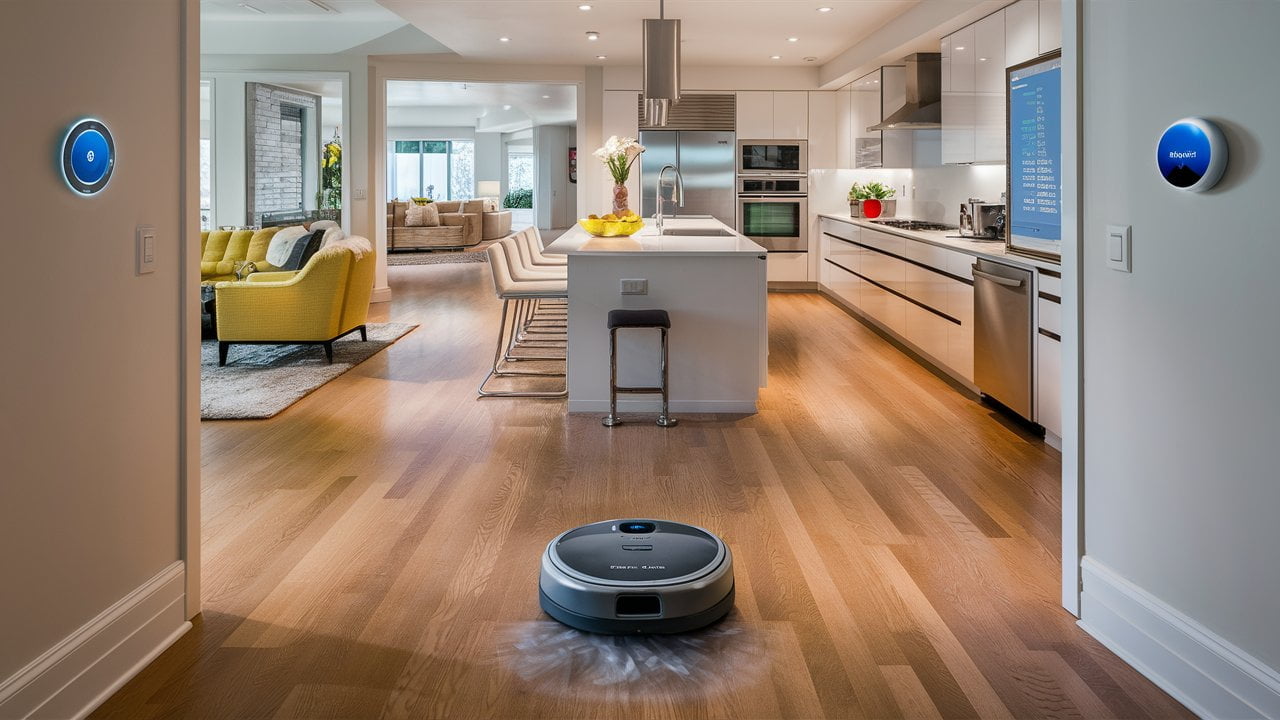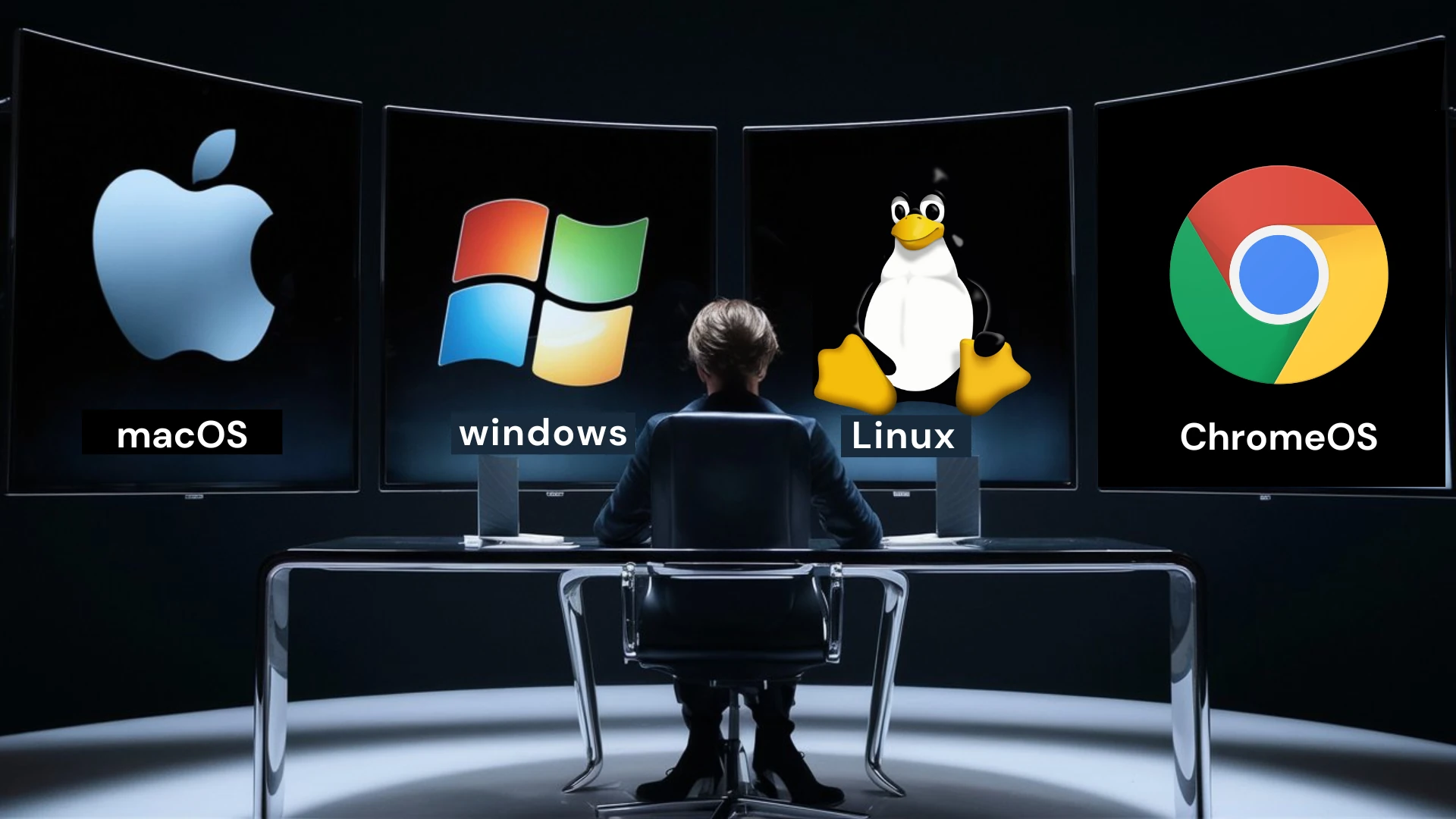In the previous article, The Ultimate Guide To Choosing A Smart Home Platform, we discussed what a smart platform is and discovered some popular options. Now, with a solid foundation, it’s time to choose the devices. With a growing range of smart home devices available, choosing the right ones for your needs can feel overwhelming. This article serves as your guide to exploring the most popular smart home device categories. We’ll look into their functionalities and highlight the benefits they offer.
Smart Home Devices
Smart Speakers and Displays
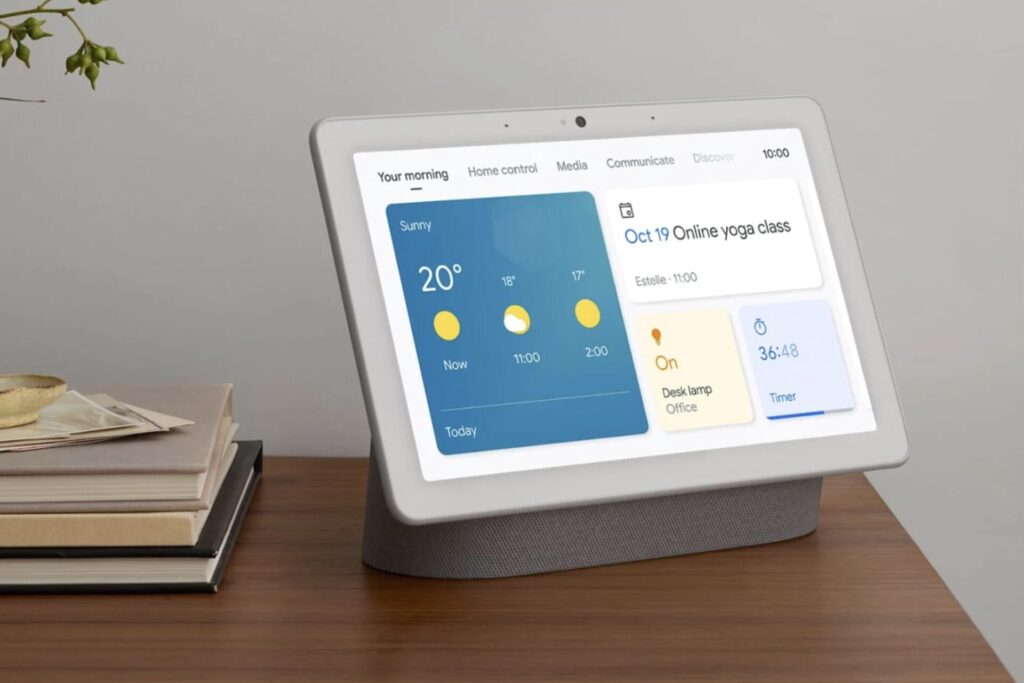
Photo credit: store.google.com
These voice-controlled smart home devices act as the command center for your smart home. You can use voice commands to control your smart devices. Beyond just controlling lights or thermostats, they can play music, set reminders, or even answer your questions using a built-in virtual assistant. An added comfort for smart displays is that they can display information like video calls or security camera feeds or there is someone at the door. Popular options include Amazon Echo (speakers & displays), Google Nest Audio & Nest Hub (speakers & displays), and Apple HomePod mini (speaker).
Smart Lighting and Blinds

Photo credit: philips-hue.com
Smart lighting systems are a key category of smart home devices. Smart bulbs and switches, both types of smart home devices, offer a wide array of features, including remote control, scheduling, and customizable lighting scenes. By adjusting brightness, color, and even white temperature, you can create the perfect ambiance for any activity, whether it’s a cozy movie night, a productive work session, or a lively dinner party.
You can program these smart home devices to turn on and off at specific times, simulating occupancy when you’re away and potentially deterring intruders. Additionally, many smart lighting systems can integrate with motion sensors, automatically illuminating rooms as you enter and turning off when empty, resulting in significant energy savings over time. Popular smart bulb brands include Philips Hue and LIFX. Smart switches like the ones from TP-Link Kasa are a convenient way to control multiple lights at once.
For an even more comprehensive smart home lighting experience, consider complementing your smart lights with smart blinds or shades. These smart home devices can be scheduled to open and close at specific times or even react to the sun’s position, maximizing natural light during the day and ensuring privacy at night. Popular options include Lutron Serena Shades, known for their quiet operation and elegant designs, and Bali Smart Blinds, offering a variety of styles and materials.
Smart Thermostats
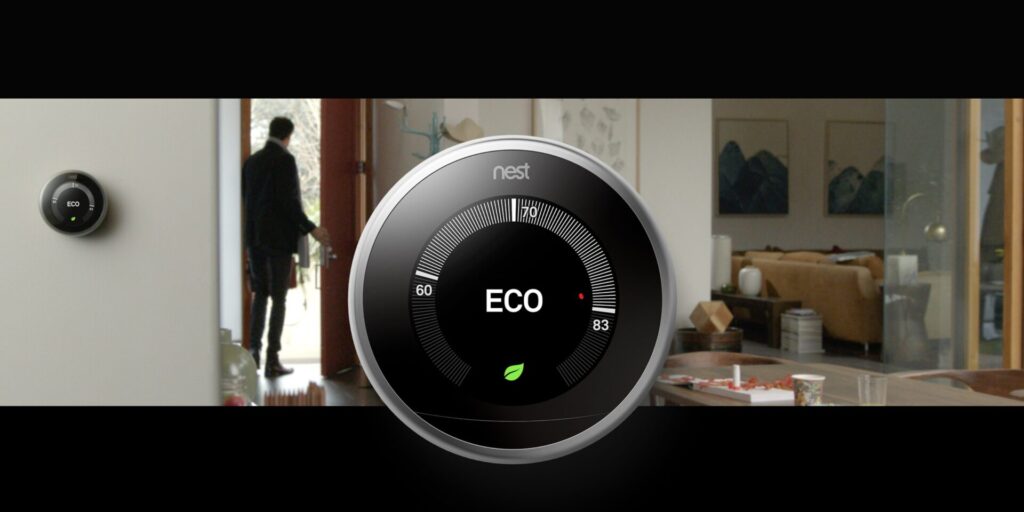
Photo credit: store.google.com
These smart home devices connect to your Wi-Fi network and allow you to remotely adjust your home’s temperature from your smartphone or tablet. You can easily set schedules for heating and cooling based on your daily routines, ensuring a comfortable environment when you’re at home while saving energy when you’re away. Some advanced smart thermostats use machine learning algorithms to learn your preferences and create personalized temperature profiles. They can even detect your presence and adjust the temperature accordingly. Some models also incorporate geofencing technology, which automatically adjusts the temperature based on your proximity to home.
Popular options for these smart home devices include the Nest Learning Thermostat, known for its intuitive interface and self-learning capabilities; the Ecobee Smart Thermostat, with its room sensors for more precise temperature control; and the Honeywell Lyric, which offers geofencing and smart alerts for maintenance reminders.
Smart Plugs
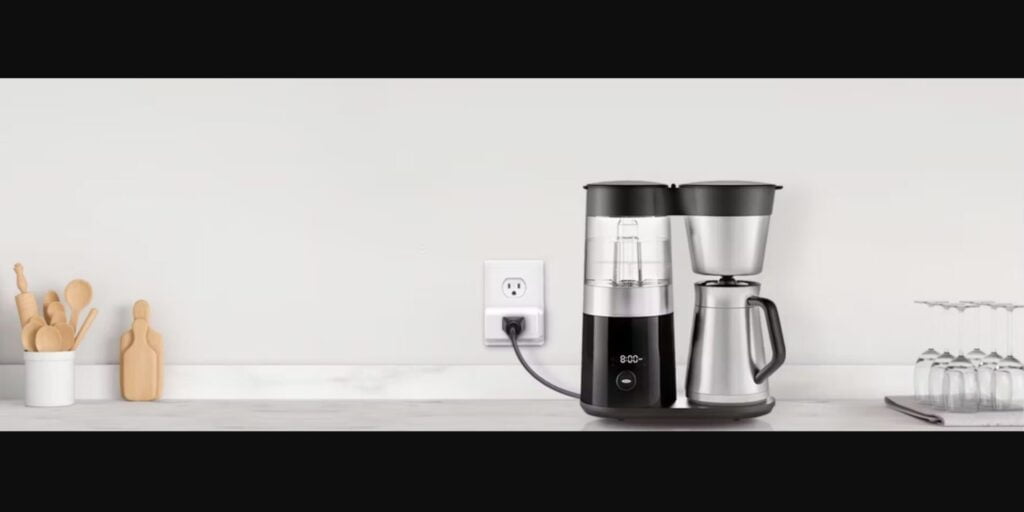
Photo credit: kasasmart.com
Smart plugs are a universal and cost-effective way to transform ordinary appliances into smart home devices, adding a new layer of control and automation to your daily routines. By simply plugging a smart plug into a standard electrical outlet and then connecting an appliance, such as a lamp, fan, coffee maker, or even a string of holiday lights, you can instantly gain the ability to control it remotely through a smartphone app.
Smart plugs offer a range of functionalities, from scheduling appliances to turn on and off at specific times to monitoring their energy consumption. You can even integrate these smart home devices into a broader smart home ecosystem so they can interact with other devices or respond to voice commands through virtual assistants like Amazon Alexa or Google Assistant. For example, you could set up a routine where your coffee maker starts brewing as soon as your alarm goes off or turn off a forgotten appliance remotely for peace of mind.
Popular options for smart plugs include the TP-Link Kasa Smart Plug, known for its reliability and broad compatibility, the Belkin WeMo Switch, which offers energy monitoring capabilities, and the Amazon Smart Plug, a simple and affordable choice for basic smart control.
Smart Security Cameras
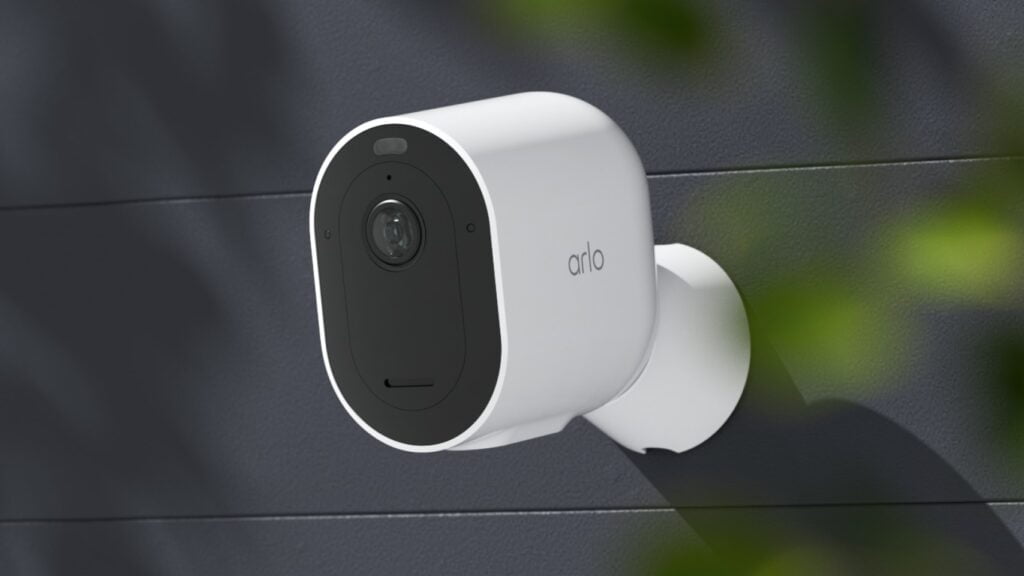
Photo credit: arlo.com
Smart home devices like smart security cameras offer a powerful way to enhance your home’s security and provide peace of mind. These devices allow you to monitor your home remotely through a live video feed accessible on your smartphone or tablet. Receive real-time alerts for suspicious activity, such as motion detection or unfamiliar faces, so you can take immediate action if needed.
Many models offer additional features like night vision for clear footage in low-light conditions and two-way talk functionality, enabling you to communicate with visitors at your door even when you’re not home. Some cameras even offer facial recognition to differentiate between familiar faces and potential intruders. Popular brands in the smart security camera market include Arlo, Ring, and Wyze Cam, each offering a range of models to suit different needs and budgets.
Smart Locks
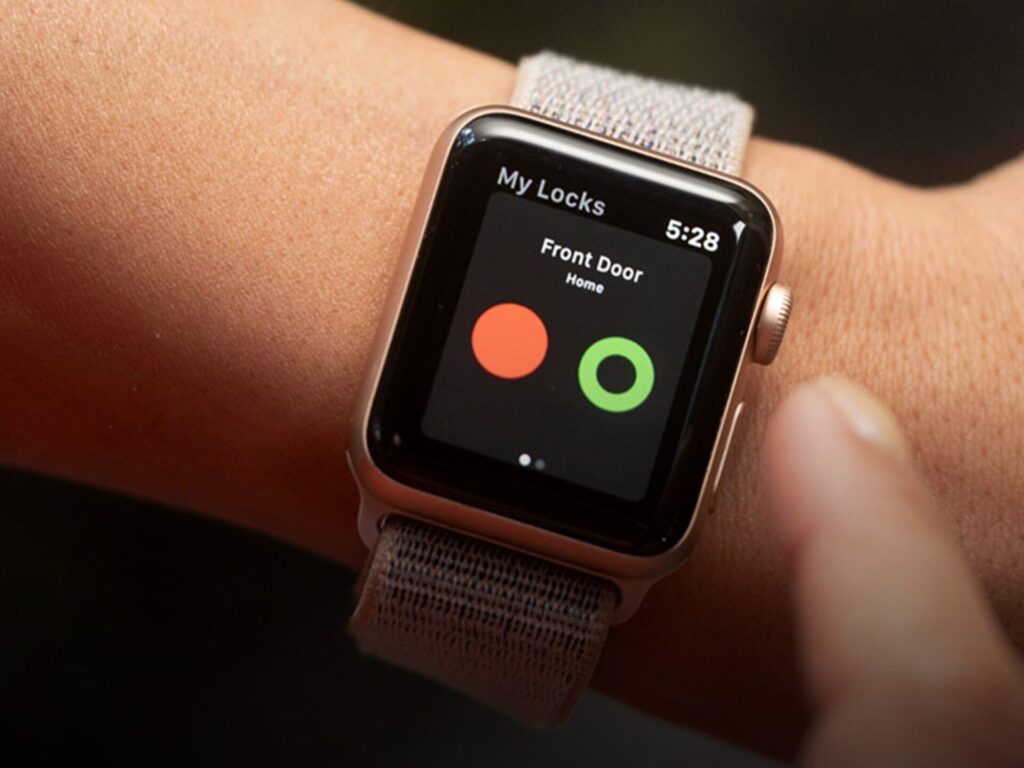
Photo credit: august.com
Smart locks revolutionize home security and convenience by replacing traditional keys with keyless entry methods. These smart home devices allow you to unlock and lock your door with smartphone apps, personalized codes on a keypad, or even biometric authentication like fingerprint scanning. They offer the convenience of granting remote access to family members, friends, or service providers, eliminating the need for spare keys or coordinating schedules.
Plus, many models include built-in tamper alarms that notify you of unauthorized attempts to access your door and activity logs that track who has entered or exited your home and at what time. Some smart locks even integrate with other smart home devices, such as security cameras and voice assistants, for a complete home security system.
Popular smart lock options include the August Smart Lock, which allows you to keep your existing deadbolt and keys while adding smart features, the Schlage Encode Smart Wi-Fi Deadbolt, known for its sleek design and robust security features, and the Yale Assure Lock SL, which offers a range of unlocking options, including touchscreen, keypad, and physical key.
Smart Doorbells
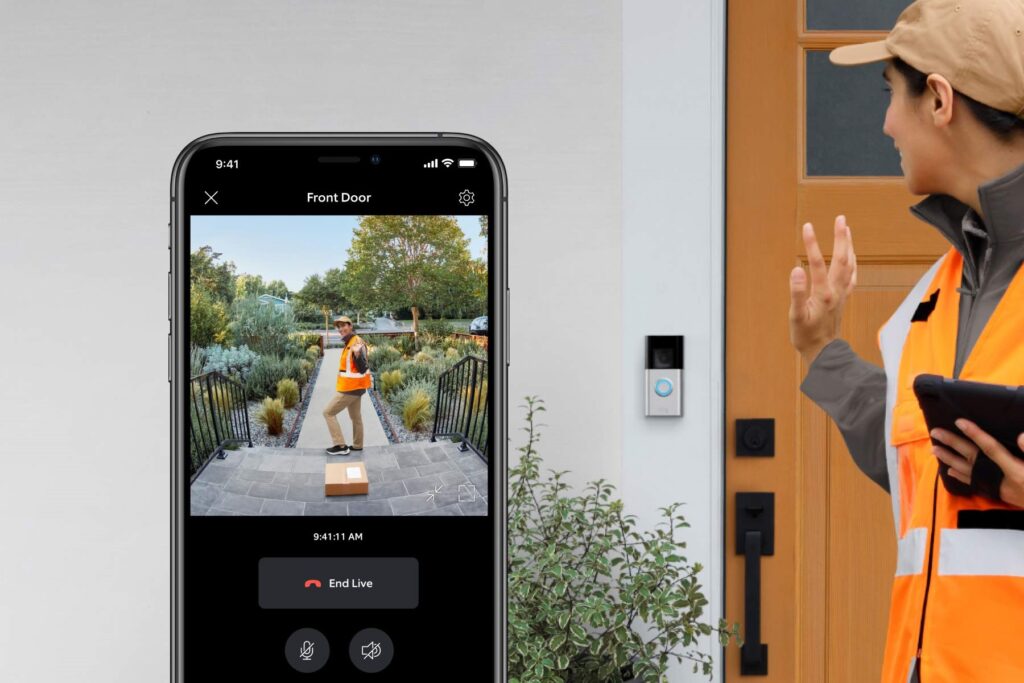
Photo credit: ring.com
Smart home devices like smart doorbells offer a modern and convenient way to enhance home security and communication. With a smart doorbell, you can see, hear, and speak to visitors at your doorstep, whether you’re at home or away, using your smartphone or tablet. These smart home devices typically include a high-definition camera with a wide-angle lens to capture a clear view of your porch, as well as motion detection sensors that can trigger alerts and record when someone approaches. Many models also offer night vision for 24/7 surveillance, ensuring you never miss a visitor, even in low-light conditions.
Plus, smart doorbells provide the convenience of package delivery notifications and two-way communication with delivery drivers. Popular options include Ring Video Doorbell, known for its extensive features and wide range of models, Nest Hello Doorbell with its sleek design and facial recognition capabilities, and Arlo Video Doorbell for its flexible power options and clear video quality. To explore the world of smart doorbells and find the perfect one for your home, check out our comprehensive 2024 Video Doorbell Buying Guide.
Smart Appliances
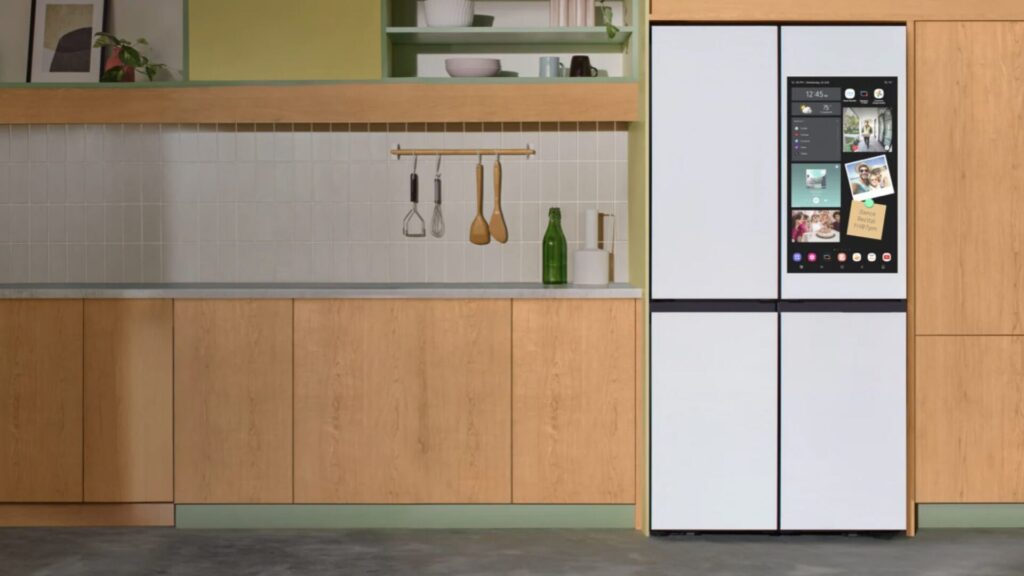
Photo credit: samsung.com
Smart home devices, including smart appliances, are revolutionizing daily chores, offering a new level of convenience and potential energy savings. Imagine a refrigerator that automatically updates your grocery list based on what’s running low or an oven you can preheat remotely while you’re on your way home. Smart washers and dryers can not only notify you when your laundry is done but also optimize energy usage based on load size and fabric type. Popular choices in this market include the Samsung Family Hub Refrigerator with its touchscreen interface and built-in cameras, the LG InstaView ThinQ Refrigerator with Craft Ice for a touch of luxury, and the Whirlpool Smart Washer & Dryer pair for seamless laundry management.
Smart Sensors
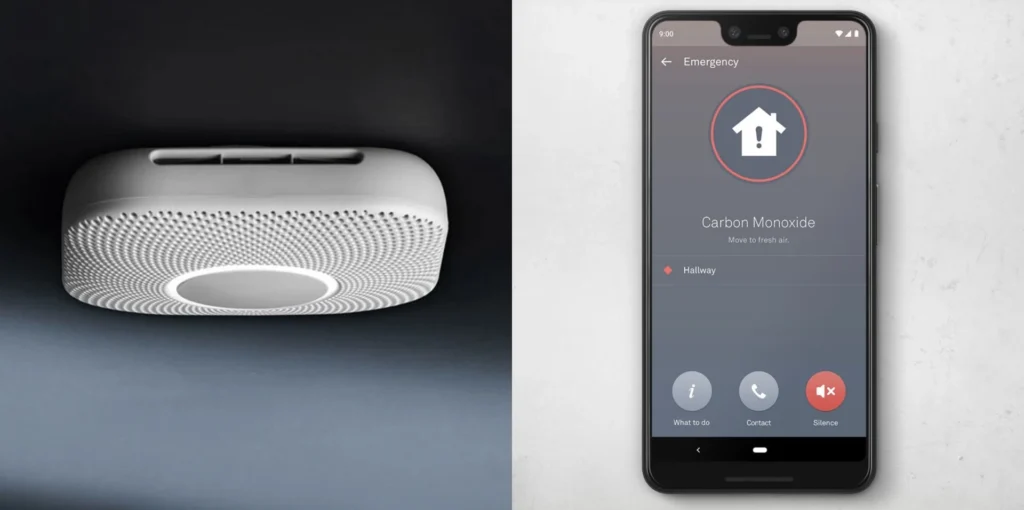
Photo credit: store.google.com
Smart home devices such as smart home sensors play a vital role in creating a safe and secure living environment. These intelligent devices can detect a variety of potential hazards, including motion, fluctuations in temperature, water leaks, or the presence of smoke or carbon monoxide. In the event of a detected incident, smart sensors can trigger automated responses, such as turning on lights to deter intruders, adjusting the thermostat for optimal comfort, shutting off water valves to prevent flooding, or sounding alarms to alert you to danger.
Additionally, they can send instant notifications to your smartphone, allowing you to take immediate action, whether you’re at home or away. Smart sensors offer invaluable peace of mind by proactively monitoring your home for potential dangers and providing an extra layer of protection. Popular options for these essential devices include the Samsung SmartThings Motion Sensor, Nest Protect Smoke and Carbon Monoxide Alarm, and Moen Smart Water Leak Detector.
Smart TVs
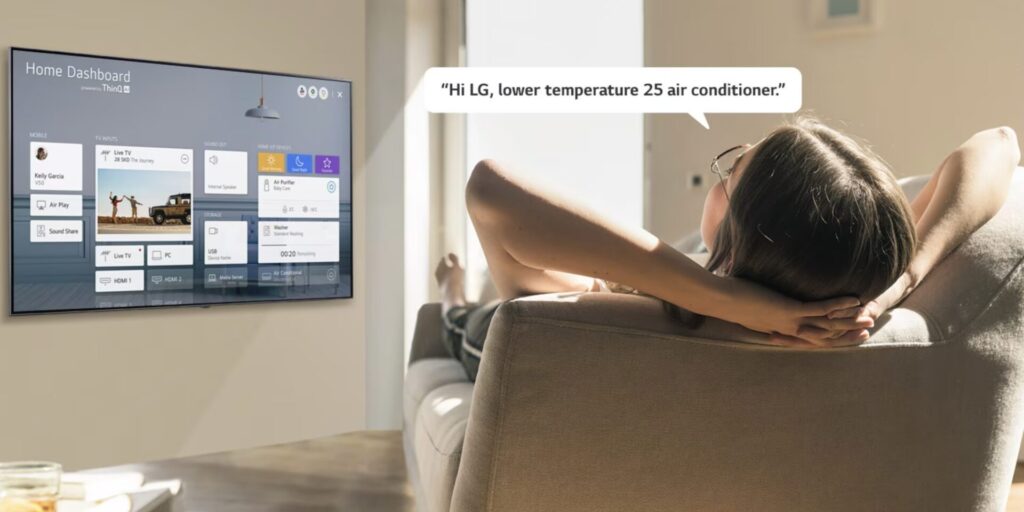
Photo credit: lg.com
These smart home devices enhance your home entertainment experience. Smart TVs provide easy access to an extensive library of content through different streaming platforms, all controllable with simple voice commands or the TV’s intuitive interface. Imagine dimming your smart lights for movie night, adjusting the thermostat without leaving the couch, or even checking your front door camera to see who’s there – all from your TV remote.
Popular models from leading brands like LG with their OLED technology, Samsung with their QLED displays, and Sony with their BRAVIA series offer a range of sizes and features to suit every budget and preference. Some even include advanced gaming features like variable refresh rates and auto low latency mode for a truly immersive gaming experience.
Smart Sprinklers and Irrigation Systems
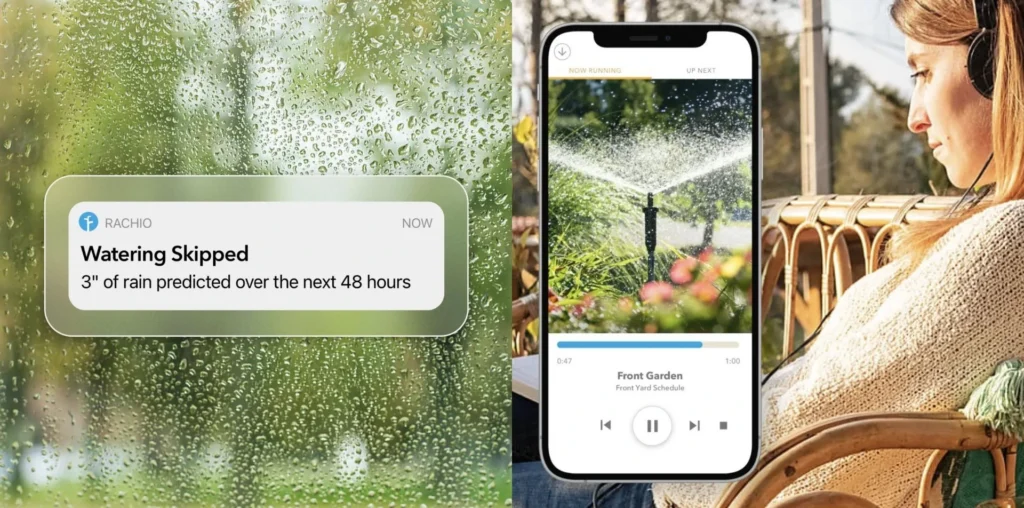
Photo credit: rachio.com
Smart home devices, like smart irrigation systems, simplify the process of watering your lawn or garden. These systems can automate watering schedules based on real-time weather conditions, ensuring plants receive the right amount of water without waste. You can also create custom schedules and control your system remotely through a smartphone app. Popular options include Rachio Smart Sprinkler Controller and Rain Bird Smart Irrigation System.
Smart Vacuum Cleaners
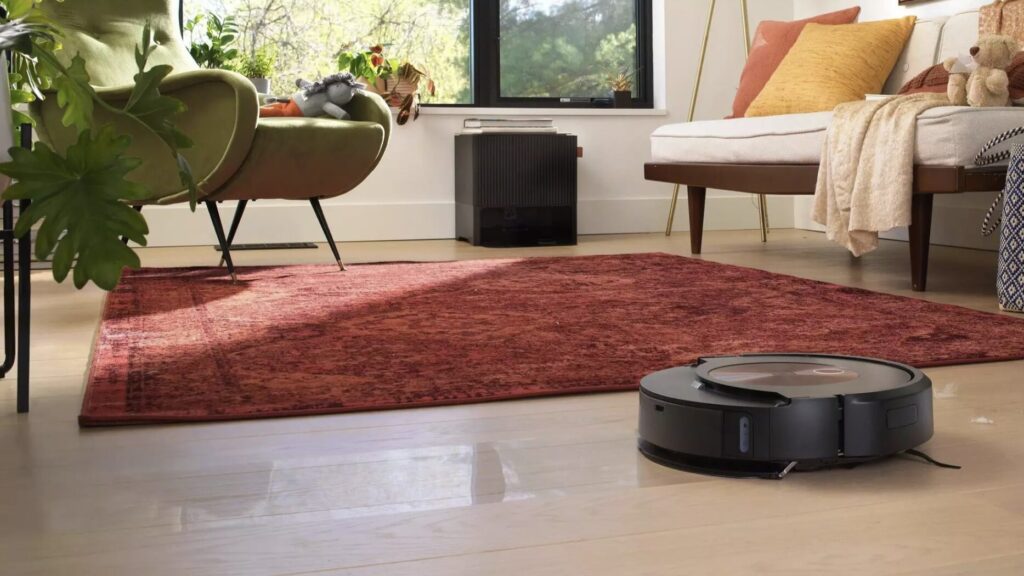
Photo credit: irobot.com
Robot vacuums are a smart home essential for maintaining clean floors with minimal effort. These intelligent smart home devices can be programmed to clean on a set schedule or controlled remotely via smartphone apps, allowing you to initiate a cleaning cycle even when you’re not at home. Advanced models of these smart home devices boast features like self-emptying bins, laser-guided navigation for efficient cleaning patterns, and even the ability to map your home’s layout for customized cleaning routines. For pet owners, robot vacuums with specialized pet hair pickup capabilities are a game-changer, effortlessly tackling fur.
Popular models include the iRobot Roomba series, known for its reliability and smart mapping technology, the Shark IQ Robot Self-Empty XL R101AE with its large capacity self-emptying base, and the Wyze Robot Vacuum, a budget-friendly option that doesn’t skimp on features.
Now that you’ve explored various smart home devices, you can start building your dream connected home! However, remember that this is just the beginning! New devices and functionalities are constantly emerging. In our next article, we’ll take a peek into the future, exploring upcoming trends and innovations that will shape the next generation of smart homes. Stay tuned for Smart Homes 2.0: The Evolution of Connected Home Technology
FAQs
Do I need a smart home platform to use smart home devices?
Not all devices require a platform, but platforms offer centralized control and automation options.
What is the difference between a smart home hub and a smart speaker?
A hub is a dedicated device for communication between smart devices, while a smart speaker can act as a hub for some devices but focuses on voice control.
Can I use smart thermostats with existing HVAC systems?
Compatibility varies, but most smart thermostats work with standard heating and cooling systems.
Do smart security cameras require professional installation?
Many smart cameras are self-installable, but some might require electrical wiring for continuous power.
Do I need a professional to install smart locks?
While some smart locks are easy to install, others might require professional help, especially if modifying existing door hardware.

